Most of us have had to deal with primer stains at one time or another. Probably, you are a do-it-yourself painting enthusiast, or you accidentally leaned on a freshly painted wall.
Whatever the cause, removing paint primer stains can be a real pain in the neck. And that is why we dived deep into research to find the best methods of removing primer stains. These are tried and tested, real-life tips that will not let you down. Read on to learn more.
The best method of removing primer stains is using cooking spray or vegetable oil. Apply a sufficient amount to the stain spot, and let it dwell for 5 minutes before rubbing on it. This will clear the stain, which you can rinse under a faucet.
Before proceeding with the primer-removing process, there are a few things to note:
Know Your Primer Stain
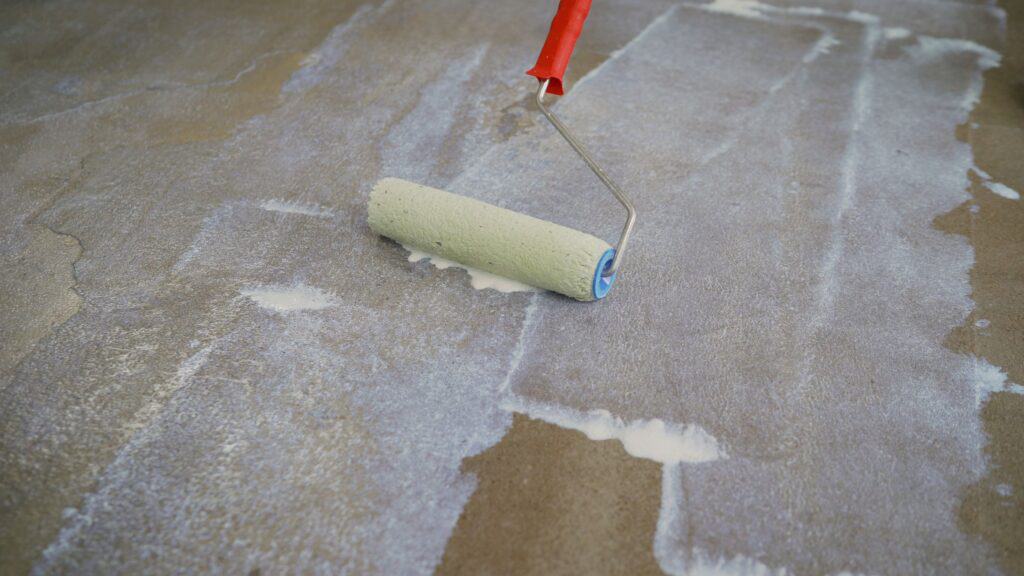
In general, there are two types of primers; water-based and oil-based stains. Also known as latex primers, water-based primers are usually easy to remove. All you need is some warm water, hand soap, and a scrubbing material.
With oil-based primers, however, the game is a bit different. For this, you will need much more than soap or mere scrubbing. This is because oil primer stains are more stubborn and require stronger solutions.
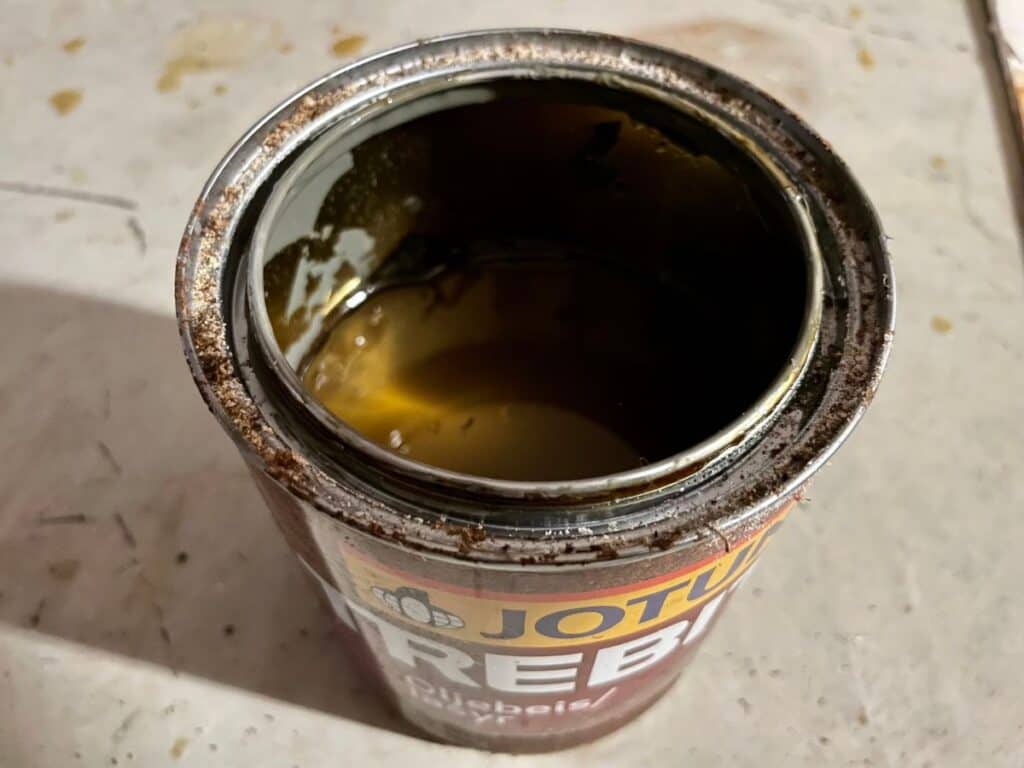
Use One Method at a Time
While there are several ways to remove primer stains, you are only recommended to try one method at a time. Some of the cleaning agents are not compatible when mixed together.
Others might result in a harsh substance not favorable for use on the skin. While others might react, resulting in an ineffective cleaning substance.
Do Not Use Scrubbing Forcefully
Removing the primer stain is not about how hard you scrub but the cleaning potency of the substance you use.
If the cleaning agent is not working, however vigorous you scrub, you will only damage your skin or the fabric. For that reason, be kind to your skin or clothes by working on the stain gently.
Acting Early Works Better
Like most stains, primer stains become tougher with time. The longer they stay on the clothing, the deeper they sink into the fabric, making it harder to remove. Act early for success in removing stains.
Preventing Primer Stains Is Better
If you can avoid primer stains, you should do it. First, removing primer stains takes time and patience. Plus, there is a possibility of the stain becoming permanent.
Of course, there are accidental stains. But if you acquired stains while working with paints, it is better to use protective gear; gloves, and coveralls next time.
Removing Primer Stains From the Skin
Start by scraping off the unstuck primer materials from the skin. You can gently do this with a blunt knife or a spoon. Next, run the spot under running water before applying ordinary soap and scrubbing.
Just wash off what is possible without using lots of force. The aim of this step is to make it easier to remove the primer stains by shedding off the excess primer materials.
Next, apply mineral oil or baby oil to the skin spot and spread it evenly while gently scrubbing. In the absence of the above oil, you can use any other oil such as vegetable oil, flaxseed oil, or coconut oil.
Next, allow the stain to rest for 5 minutes for the oil to soften the stain.
After this period, scrub on the spot to remove the stain. You can do this by using your fingernails or scrubbing material. For example, you can use an old washcloth.
If the above method doesn’t completely remove the primer stains, you can try another cleaning solution. To completely remove the remaining residues, you can use rubbing alcohol. Rubbing alcohol is a well-known solvent that works well with primer stains.
Its only downside is that it is skin-drying. However, this is a temporal problem as you can use skin lotion or moisturizer to restore your skin once done with the stain.
Using rubbing alcohol is simple. Dip a cotton gauze into the solvent, and use it to rub the stain to soften it. Continue rubbing this way for 3-5 minutes, and this is enough to lift any remaining stain.
Once done scrubbing with alcohol, you can apply soap and wash it off under a faucet. This is to clear any lingering rubbing alcohol odors.
Removing Water-Based Primers From the Skin
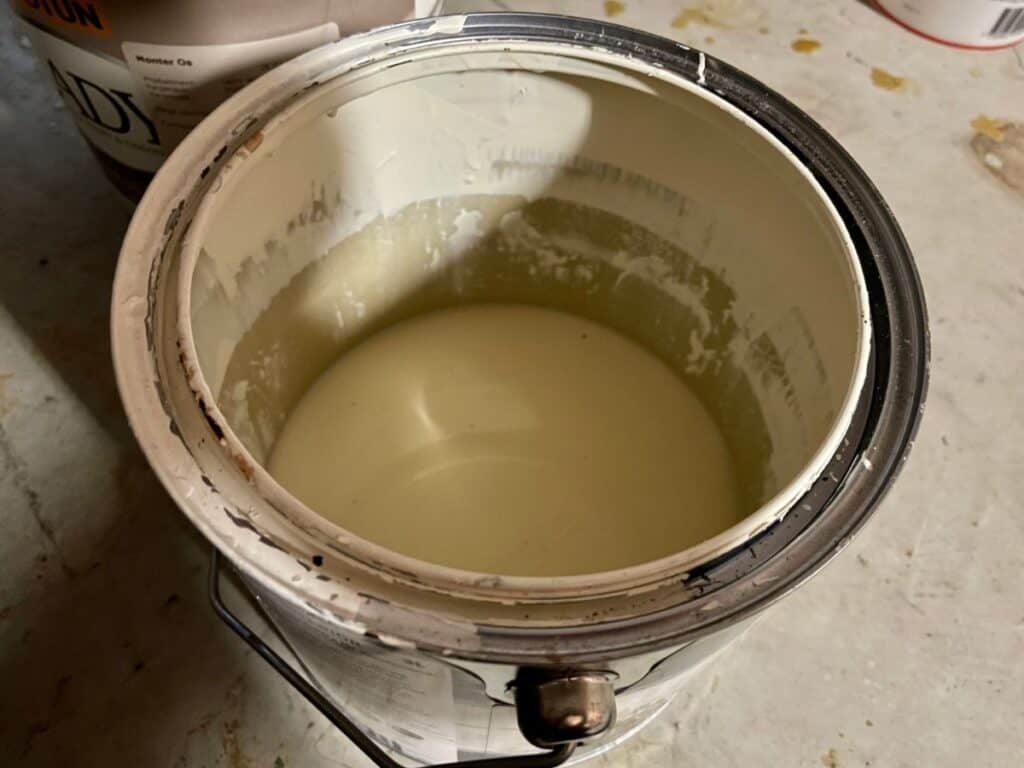
Water-based primers may not require lots of cleaning agents to remove. Just using ordinary soap might be sufficient to dislodge this kind of stain.
To start off, add about two teaspoons of dish soap to a bowl of warm and stir briskly to lather it up. Next, use a washcloth dipped into the soapy water to scrub on the stain spot while pausing to observe if it is getting removed.
For water-based primer removing the stain shouldn’t take long. After doing this several times, the primer should start transferring to the water, which is an indication the stain is coming off. Continue doing this until it is completely removed.
If you are satisfied with the results, you can rinse the hands and dry them. Finally, apply your favorite moisturizer or lotion.
However, if the stain is not budging, then most likely, this one is not a water-based primer. This means you need to shift to a stronger stain-removing method.
Removing Primer Stains From Clothes
When it comes to removing primer stains on the clothes depends on the type of primer. We will consider both the water-based and the oil-based stains below.
Removing Latex Primer Stains
Also known as an acrylic primer, this painting prepping chemical is water-based, and its stains are relatively easy to remove. To know if you are dealing with water-based or oil-based, you may check the primer container label.
Most are labeled “acrylic” or “latex.” Alternatively, you can do a test by placing a drop on the stain spot. Unlike a drop on oil-based primers, which beads, drops on latex primers start wetting the spot.
To remove latex primer, start by removing as much of the primer material from the spot as possible. Do this with a butter knife, spoon, or any other blunt item, whether the stain is wet or dried up.
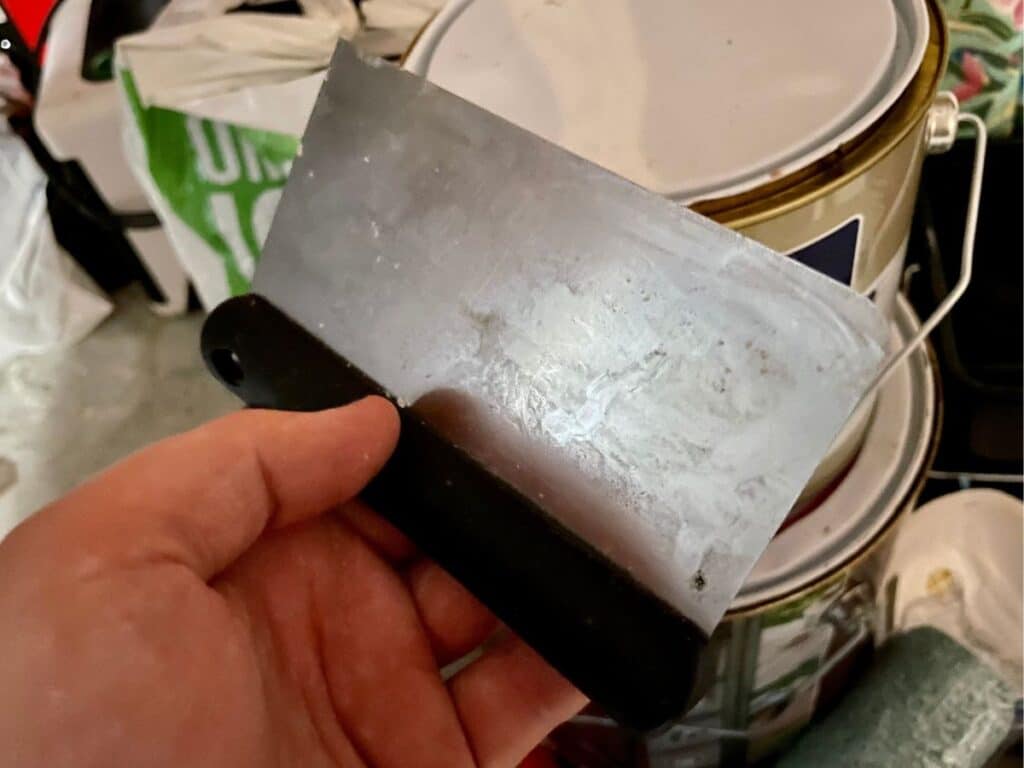
Another recommended method is to apply duct tape over the stain and yank it away in a quick motion. This method has been proved to remove the primer materials sticking to the fabric.
In this step, run the stain under running water. Start by turning the stain inside out, and place the spot under a hot water faucet.
This will not only soften the stain but will help in dislodging any excess material from the stain. To help in removing the stain faster, you can rub the stained part of the fabric against itself.
Pretreating the Stain
Here, you can presoak the stain to enable the treating chemical to loosen the stain. You have the option of using commercial praying agents or creating your homemade solution.
Some of the common commercial stain removers include Citristrip Stripping Gel and Goof Off Stain Remover.
While the commercial removers work, homemade solutions work as well. One of the most effective solutions is to mix handwashing soap and dishwashing detergent.
To make this stain remover, add ½ cup of each cleaning agent to a container and mix them thoroughly.
You can then apply a few drops of this solution to the stain and spread it with your fingers to cover it evenly. Once done, allow it to sit for approximately 10 minutes before rubbing the fabric stain spot against itself.
You can then rinse the spot and examine if the stain has been removed. Usually, stain removal is unlikely to happen on the first attempt.
This means if the stain has not been removed, you might want to repeat the process with a more potent stain remover.
One of the options is the use of rubbing alcohol. Spray rubbing alcohol on the spot by using a spray bottle, and wait for 10 minutes before again rinsing with running warm water. Hopefully, the stain will have cleared.
Rinse well before starting with the next stage to wash the garment. The reason for rinsing the cleansers of the garment is to prevent the contamination of other clothes in the washer.
Ideally, the item should be washed singly to avoid contaminating other clothes.
After rinsing, load the clothing into the washer, and put in the right detergent dosage for a normal wash. Afterward, run a warm wash cycle or as recommended on the care label. You can then rinse and dry.
But remember to inspect the garment properly to avoid drying the garment with the stain on it. This is especially true when it comes to machine-drying.
This method sets in unremoved stains and makes them permanent. You can try line drying under shade, if at all.
Removing Oil Primer Stains
Oil-based primers are made from a mixture of suspension of ingredients in oil. Once these primers are applied, they tend to stick to surfaces much harder than others. For that reason, they form tougher stains.
Just like in the case of water primers, doing a simple test will identify if the primer is oil or water-based. Follow the procedure of sprinkling a few drops of water and observe how they react with the stain spot.
Start by removing as much of the primer from the stain as possible. Use a butter knife, a spoon, or any other blunt object.
Besides scraping, for dry stains, you can use a hard bristle brush to remove more of the primer. Put all the primer material on a paper towel for safe disposal.
Next is to pretreat with the favorable primer thinning solvent. Remember being oil-based, using water and soap will not work. But primer thinners have the dissolving power to cut through the oil stains.
When it comes to commercial primer thinners, there is a number in the market. Just to mention, an example is the Sunnyside thinner. You can visit your nearest home improvement store or buy it online.
In the absence of these ones, you can use turpentine, white spirits, or acetone. However, before starting to use them, be sure about their compatibility with the specific fabric.
For example, acetone or turpentine solvents damage fabrics such as rayon, triacetate, or acetate. Therefore, do not forget to test the solvent before starting using it.
Spread the item you are using on a flat surface, such as on a table, with a white cloth piece under the stain spot.
Then with another white lint-free cloth or microfiber dipped into the thinner, start dabbing the stain spot. Continue dabbing the primer stain while replacing the dabbing cloth as it gets saturated.
If done with dabbing the spot, soak the stained garment. Before you do this, apply a heavy-duty detergent to the stain spot and slightly rub the fabric against itself. Then dip the item into the basin and let it dwell for a minimum of 1 hour.
Lastly, rinse the item from the soaking solution, and launder normally.
Removing Primer Stains From Delicates
Most delicate clothes are labeled as “dry-clean-only” or any other term that indicates their delicate care needs. The best way to know this is to look at the care label instructions.
But in general, any item made of rayon, acetate, silk, or triacetate, is considered delicate and should be washed with care.
As with other stains, first, scrape off the primer from the stain to make the pretreatment and removal easier. Alternatively, if the delicate is washable, you can use mild stain removers such as dish soap.
To make a dish soap water solution, add two tablespoons in ½ liter of water and use it to blot the stain spot until it is cleared. To do this, you can use a clean piece of cloth dipped in this solution.
Once the stain has been cleared, you can wash the item according to the wash instructions on the care label.
I also wrote a guide on removing anti-fouling stains, and one on removing lacquer stains that may interest you.
Frequently Asked Questions
Can I Use a Nail Polish Remover to Clean Primer Stains?
One of the main ingredients in nail polish remover is acetone. Acetone is a great stain remover and can be used to successfully remove primer stains.
But be careful with it as it can react with certain fabrics such as acetate, triacetate, and rayon.
Does the Water-Based Primer Come Out of Clothes?
Removing stains from this kind of primer is quite easy compared to oil-based primers. If you act on the stain early enough, you only need soap and a mild stain remover.
All you have to do is to scrape out the primer material from the stain and flush it with warm water. You can then presoak with a dish soap-water solution for 1 hour before laundering normally.
What Can I Do If My Clothes Accidentally Get Stained With a Primer?
The first thing is to avoid panicking. If you panic and frantically rub on the stain, this will only make the stain messier.
Gently scrape the primer off the stain, and soak with the appropriate pretreating agent according to the wash instructions for up to 24 hours before washing normally.
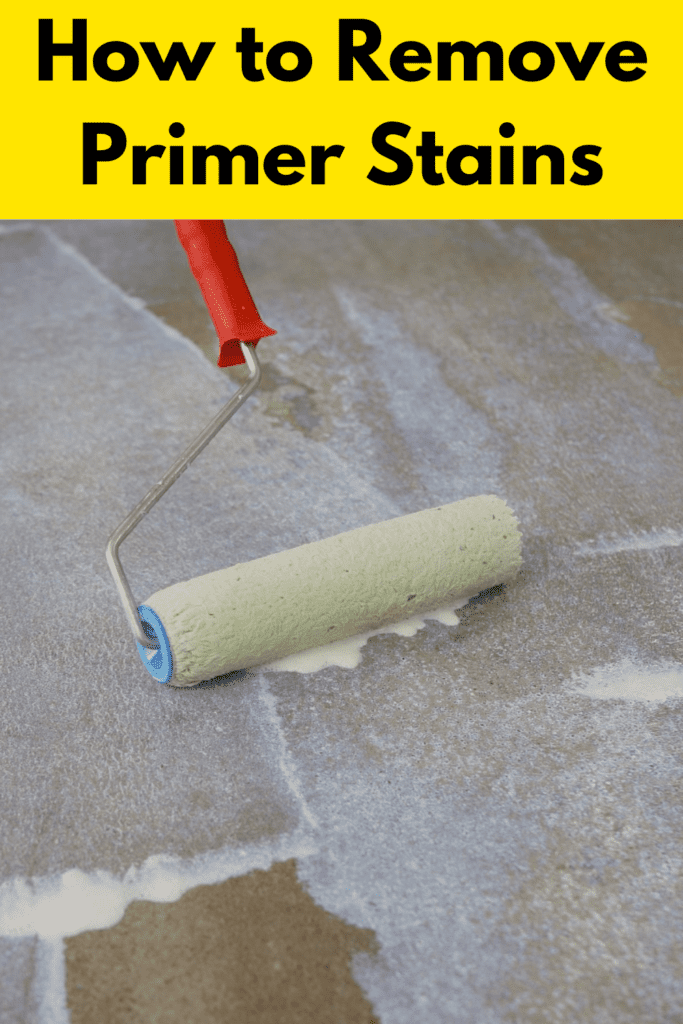

I’m an expert wardrobe organizer and a bit of a clean freak. I created this website and its YouTube channel to share practical guides about laundry and organizing. My teachings have been featured in multiple large news publications, and I’ve self-published two wardrobe organizing books and an entire course on the subject.
